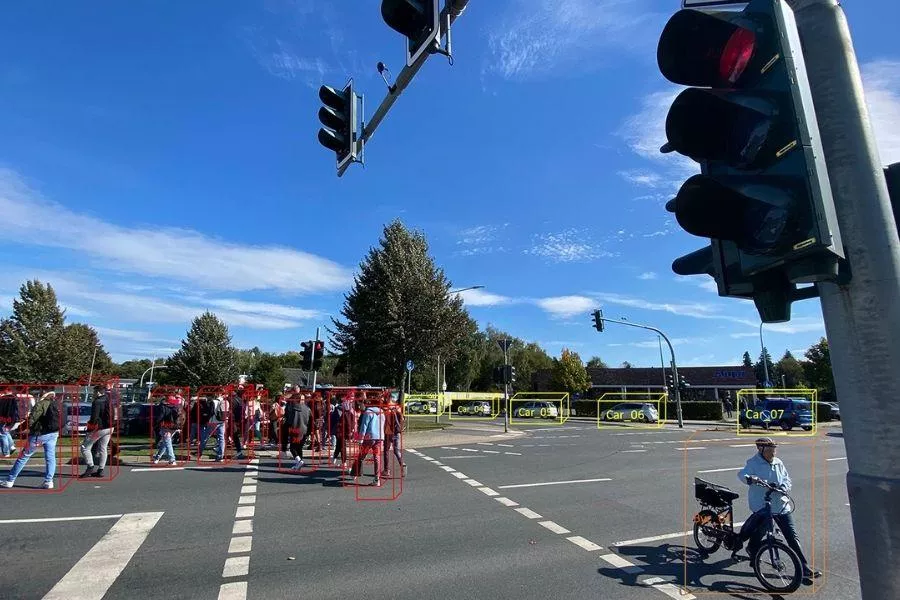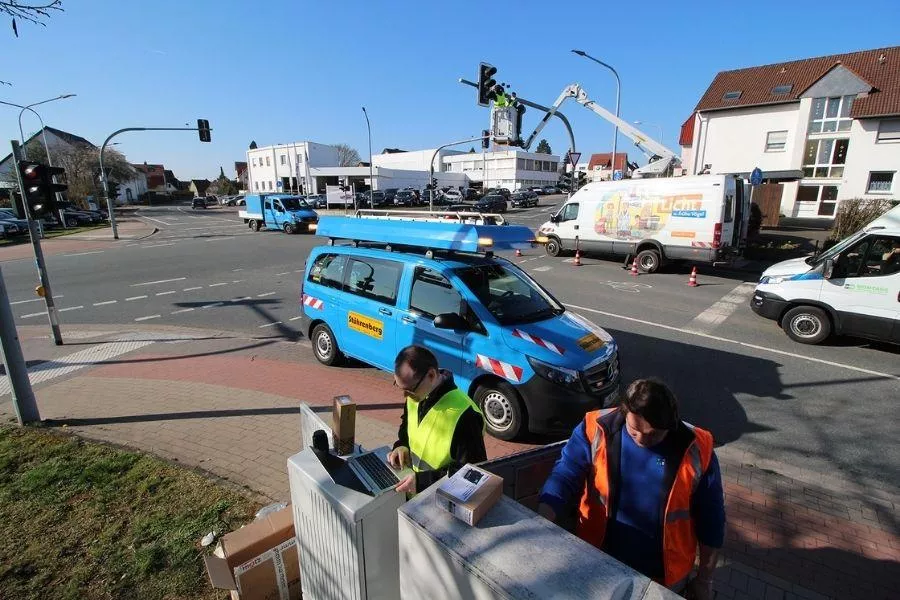Recently, German industrial automation researchers from the Fraunhofer Institute for Optronics, System Technologies and Image Exploitation IOSB unveiled a traffic light system controlled using artificial intelligence.

This AI-driven traffic light system can detect and track pedestrians and cars
The aforementioned AI traffic light system is part of the “KI4LSA” and the “KI4PED” project which aims to combine self-learning algorithms with better sensors in order to provide better flow of traffic, and thus, shorter wait times. At the same time, it also aims to improve pedestrian safety at crossings.
According to the industrial automation research teams in charge of this project, the AI-driven traffic light essentially works by adapting to traffic situations. It does this by gathering information through a series of cameras and sensors. The data is then run through an algorithm to calculate the best times to switch from “stop” to “go”.
In contrast to this, traditional traffic lights use a pre-set, rigid system which won’t work well in particular situations. Of course, most folks who regularly drive around major cities like Metro Manila, Cebu, Davao know this due to the fact that enforcers sometimes switch off said traffic lights and manage the traffic themselves. Most often than not though, even this solution won’t work.
In turn, an intelligent traffic light system would eliminate the need for human intervention. And thus, it would eliminate causing even more congestion due to human error.

The AI traffic light system is still being tested
Currently, the AI-driven traffic light system is “still learning the ropes” at Lemgo, Germany. Specifically, it is undergoing tests at a junction where the researchers are letting it manage traffic in a controlled environment complete with pedestrians, different traffic volumes, and other realistic situations.
Once this is deployed en masse in a city though, the AI-driven traffic light is projected to improve traffic flow by 10 to 15 percent. While that sounds well and good, the researchers say that there is still the fact that the simulated traffic that the AI traffic light is currently handling isn’t a 1:1 representation of real-world traffic. So there are still a lot of unknown variables before it will be used in an actual road.
For more exciting car related and transport related news, keep reading here on the Philippines’ largest automotive portal.
Recent posts
- disregarding traffic sign top violation mmda Dec 29, 2021
- Philippines not included most traffic jammed countries Nov 12, 2021
- smc traffic management skyway stage 3 Jul 15, 2021
- flashing yellow traffic light meaning Nov 17, 2020












